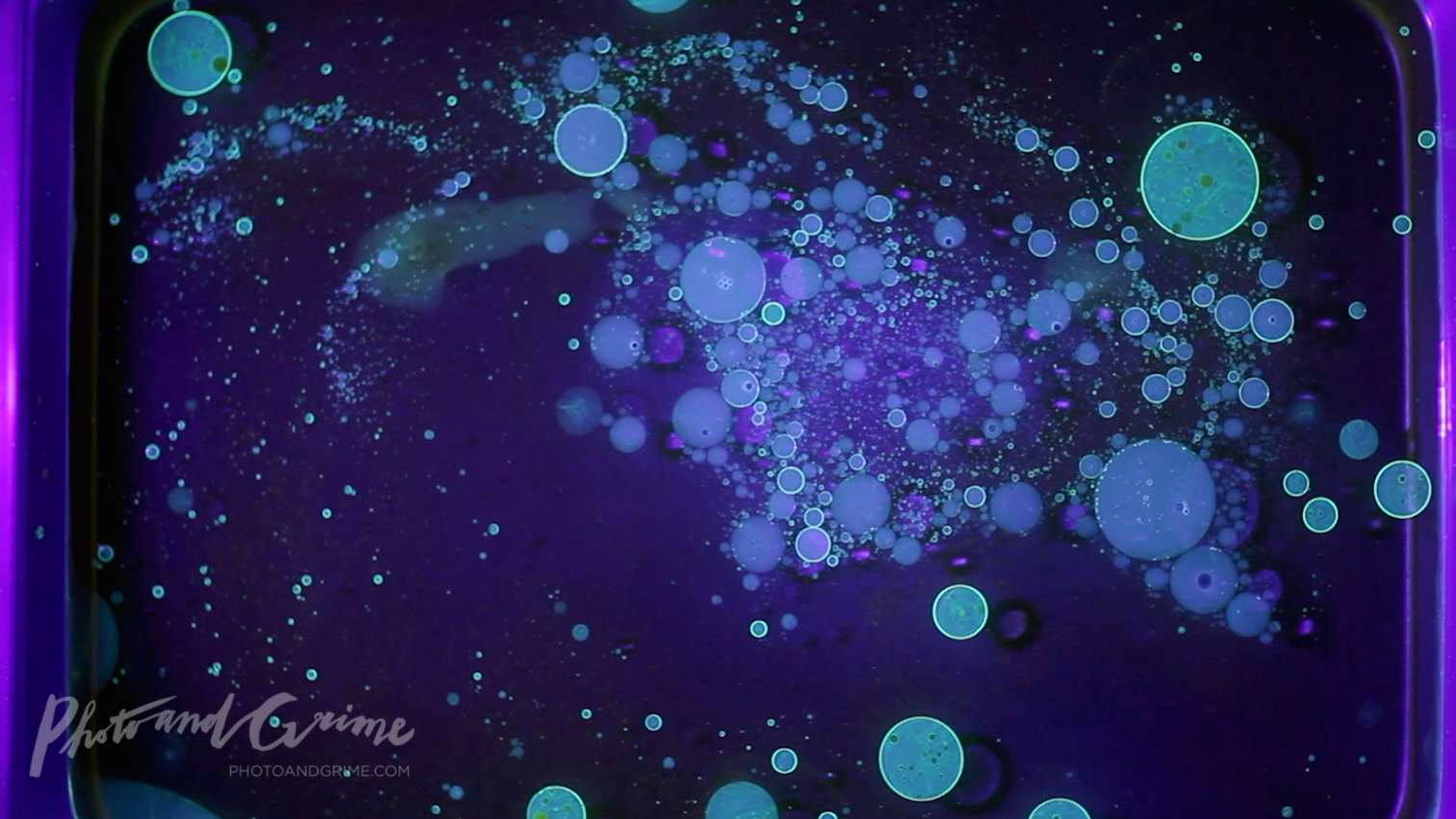The journey and science behind 'Birth of the Universe'
Making short films about UV reactive ingredients is something I enjoy doing. In this blog I will tell you more about the science behind Birth of the Universe, a glow video I made.
Making things glow in blacklight (ultraviolet light) is a hobby of mine. It's the reason why I always have a tiny UV led light on me: so I can test if something is UV reactive, and will glow in the dark in blacklight. It's not uncommon to find me in the supermarket, shining my blacklight on things. Did you know orange peas are UV reactive for example? And that when bananas start to rot, the edges of the dark spots on them start to glow in blacklight? It's all quite fascinating!
Edible blue UV Glow in the Dark Star Wars lightsaber made with quinine (Tonic).
While on search for UV glow ingredients, I've come across quinine (ingredient in Tonic), chlorophyll (green pigment found in green plants) and vitamin B2 (Riboflavin) as the three strongest glowing ingredients out there.
Edible yellow UV Glow in the Dark Noodles made with vitamin B2 (Riboflavin).
Of these three, chlorophyll is the most difficult to extract. Contrary to its colour in normal light (green), it doesn't actually glow green in black light. It glows red/pink. While trying to make green UV reactive cupcakes that glow red in UV light, I found out through experimenting that chlorophyll can be extracted with oil, butter or pure alcohol.
Edible pink UV Glow in the Dark cupcakes I made with chlorophyll.
Knowing of one ingredient that changes in UV light when being mixed with pure alcohol, I went on a mission to find another one. The ingredient I found out to possess this same quality, was turmeric.
Turmeric is a rhizomatous herbaceous perennial plant of the ginger family, Zingiberaceau. It's often used as a spice to colour curry yellow.
While turmeric - just like vitamin B2- is slightly UV reactive already in blacklight, it doesn't show its full potential until mixed with pure alcohol. When you add the alcohol and start mixing it in blacklight, the turmeric mix will instantly become bright neon yellow. It's quite magical to behold!
Water is the ingredient that will destroy the UV reactive effect of the glowing turmeric, just like it does with the UV glow effect of chlorophyll. Unlike vitamin B2, that actually becomes more UV reactive when mixed with water.
Turmeric-alcohol mix in blacklight, dropped with a pipette in oil floating on water. Notice how the yellow glow disappears when it gets in contact with the water.
When I wanted to create the Birth of the Universe - A conceptual macro short film about particles and life (ha, that sounds so pretentious)- I decided to use the turmeric-alcohol mix as my basic ingredient for this glow project. For one, because I hadn't used it in any of my projects yet. Another reason was because alcohol and water don't mix with oil (rice oil; another ingredient I used). Add some turmeric to the alcohol you're dropping in the oil surrounded by water, and you can create interesting 'glow explosions'!
Glowsplosions!
Even though alcohol and oil don't mix, and water kills the UV glow effect of turmeric, the turmeric-alcohol mix did make the edges of some of the oil droplets glow more in the end.
Oil galaxy in blacklight. Notice how some of the droplets that have been exposed to the turmeric-oil mix have glowing edges.
I had fun creating a mini galaxy with the oil. Altogether this whole video taught me a lot about the science behind glow ingredients. And, not to forget, editing a 'still life' video. I filmed everything with my Canon EOS 5D mark II, and a 50mm 1.2 lens.
Dishwashing soap
I also used dishwashing soap in this video, because it repelled the other ingredients I used when I dropped it in the water. It reminded me of a 'clear sky' appearing in the chaos that is our universe.
And then there was life!
The final ingredient I used was milk. Due to the white colour and vitamin B2 it contains, slightly UV reactive as well (not as bright as Tonic though).
PhotoandGrime.com does not display third party advertisements because we believe information and knowledge that informs or protects the public, should be (clutter)free.
If you found this article informative and want to support the website, consider sharing it!
You can also show support by becoming a Patron or by buying a coffee.













